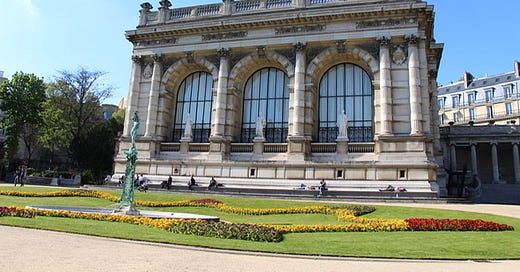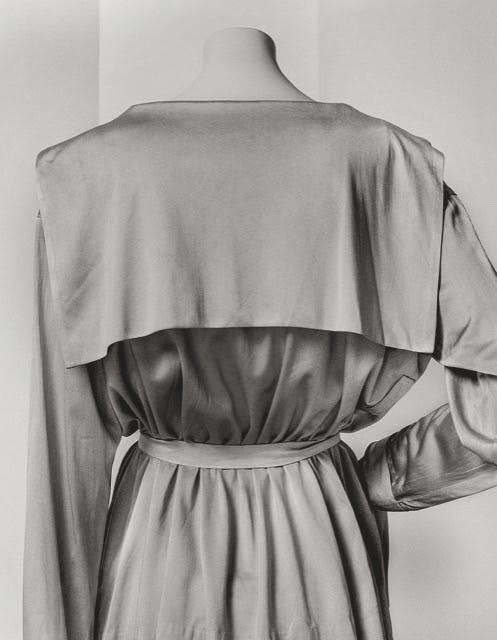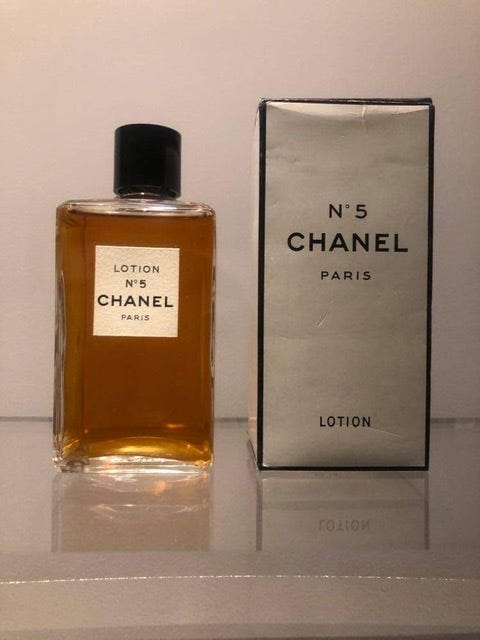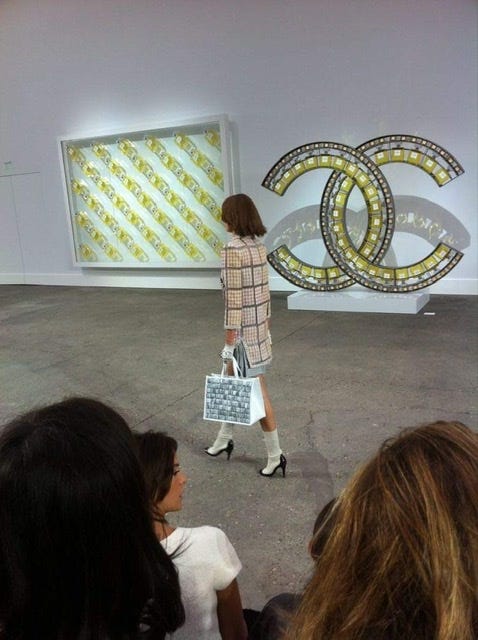Chanel No 5 was first perfume I ever purchased. This was prompted after receiving a spritz while walking through one of the perfume aisles of a legendary New York City department store. That was more than 20 years ago. At the time, it was the guilty pleasure on which I splurged. However, I never took the time to research what went into creation of the smell I so loved and wore for many years.
For all the seduction of Chanel as the ultimate luxury brand, I was ignorant of the iconic founder’s twisted backstory. Then Paris came calling about the biggest retrospective of House of Chanel taking place in the “City of Lights.” In listening to the brief, I was captivated. I was not prepared for what I learned. Holy cow. Who knew?
For the launch of our lifestyle focus, self-styled fashionista Shellie Karabell sent us this report from Paris about Chanel’s “Fashion Manifesto” at Pallais Galliera.
A gift from the fabulously wealthy Marie Brignole-SaleGalliera to the City of Paris in 1895, the Palais Galliera was designated as the city’s fashion museum in 1977. But it wasn’t until this year, following two years of extensive renovation and expansion, costing 8.1-million Euros that the museum in the city’s fashionable 16th arrondissement (and a short walk from the YSL museum) came into its own.
Financed by the City of Paris and Chanel, the renovations refreshed 5,000 sqm of façades and consolidated 320 balusters that had been weakened by the elements. But the major changes are inside: the museum’s exhibition space has been doubled to nearly 1500 sqm (including new galleries in the basement) to house its own collections and present more ambitious temporary exhibitions.
And the first such ambitious temporary exhibition (through July 18) was devoted to the fashion designer whose name is perhaps the one most-associated with Paris: Gabrielle “Coco” Chanel (1883-1971).
* * * * * * * * * * * * *
“Fashion Manifesto” was the first extensive Chanel retrospective ever mounted and included more than 350 pieces from the Palais Galliera collections, Patrimoine de CHANEL, international museums (including The Victoria & Albert Museum in London, the De Young Museum in San Francisco, the Museo de la Moda in Santiago de Chile, the MoMu in Antwerp), and private collections.
It was all there: Chanel’s first important design, the 1916 mariniere (sailor’s) jacket; the little black dress (lionized by American Vogue); Chanel No 5 perfume and the costume jewelry launched in the 1920s; the suits with collarlessjackets…clean, understated designs without excess, using light and floating that focus on the purity of the line.
Living Classics
Classic Chanel pieces are so relevant they are still coveted and worn today: the 2.55 hand bag, launched in February 1955, identified by its shape, its flap, and the overstitching that creates a quilted effect, and its twist lock clasp. Chanel designed it to be, above all, practical. The two-tone sling-back shoe, in 1957, completed the Chanel silhouette. Even if you’ve never seen a Chanel original close-up you’ve seen her iconic designs replicated (but never truly duplicated) worldwide by all and sundry.
To the uninitiated, confronting masses of Chanel creations might seem like pawing through Nancy Reagan’s closet, or wandering through a gallery of Old Masters, whose work is so often copied and displayed on everything from T-shirts to postcards, you are frankly a bit tired of it all. But, as with art, fashion – particularly Chanel’s fashions – need some historical perspective to be fully appreciated.
Women’s Liberation
For starters, it’s no accident this exhibition is titled “Fashion Manifesto,” for Chanel’s approach to fashion was nothing if not revolutionary. Today, we see her designs as the groundwork for a new kind of subtle elegance based on freedom of movement, a timeless style for a new kind of woman. But at the time, it was radical – a precursor to Women’s Lib.
Sensitive to the changes brought about by World War I, Chanel was a fashion radical, liberating women from the confines of corsets and putting them into flowing, unrestricted materials such as knits, which had hitherto been the stuff of men’s underwear and servants’ clothing. She put women in trousers (though it was Yves St Laurent who, some 40 years later, kept them there). And she herself wore everything she designed. First. Women copied her. They still do.
Like her fashions, her life is a story for all times – for entrepreneurs, for women in business, for freedom-loving freethinkers.
It was Chanel who set the groundwork for the modern woman: not just what she wore but how she lived. She did it by creating the “look” for her own life…and it is a life worth examining.
The Chanel Aura
Chanel opened her first shop – selling hats – in the rue Cambon in central Paris in 1910, still the site of one of Chanel’s principal boutiques. Two additional shops – in the resort towns of Deauville (1912) and Biarritz (1915) followed – providing Parisians fleeing the city during WWI with a place to shop. Financing came from two industrialists whom she may have met during her years as a cabaret singer (1905-1908). Indeed, as she was to shape much of the legend that surrounds her today, she herself created the name “Coco” derived from these years: short for "cocotte,” French slang for “kept woman.”
She was born Gabrielle Bonheur Chanel on August 19, 1883, in Samur in the Loire Valley region of France. Her parents were not married; her father worked as a peddler and handed Gabrielle and her four siblings over to an orphanage when their mother died. This is where Gabrielle learned to sew.
In-between running her business, Chanel managed to find time to design costumes for Diaghilev’s Ballet Russe which performed in Paris from 1909-1929 – an activity which put her in touch with the likes of Picasso and Stravinsky (with whom she not only had an affair; she financed the more sanguine re-performance of his notorious Sacre de Printemps, whose debut at the Theatre du Chatelet was so despised that the audience actually rioted).
Scents and Sensibilities
Her real success came in 1923 when the still-best-selling perfume, Chanel No 5, was born. Selecting the fragrance that would become a timeless classic was Chanel’s strong suit; financing its manufacture and distribution was something else. Support for manufacturing came from the perfume-making Wertheimer family (headed at the time by brothers Paul and Pierre); distribution came from Theophile Backer who owned the Galleries Lafayette department store. The birth of Les Parfums Chanel in 1924 came at a heavy price: the Wertheimers bought 70% of the venture, Backer 20%. Chanel herself held just 10%. When the scent’s success soared, Chanel tried any number of ways to increase her percentage.
World War II presented her with such an opportunity. The Wertheimers, being Jewish, had fled France when the Nazis arrived. Chanel wrote to the Nazi authorities claiming that Les Parfums Chanel was a Jewish property and, as had befallen other such companies during the war, should be “redistributed” …to her. But the forward-thinking Wertheimers had handed the company over to a gentile businessman who agreed to hold it for them until the end of the war.
Chanel’s attempted takeover failed; she closed her shops,shut down her business, and became involved with a German military office -- a liaison that allowed her to stay in her apartment at The Ritz for the duration of the war. During the peace, however, she was questioned about her German liaison. Though never charged with collaboration, she left Paris for a kind of self-imposed exile in Switzerland.
The Comeback
Chanel made her fashion comeback in 1954 at 70 – an age when most people are retired or have given up. Christian Dior’s New Look was turning heads, business opportunity was overtaking wartime discretions, and relations with the Wertheimers had improved. Paul had died and Pierre bought the controlling interest in Les Parfums Chanel from Backer and from Chanel herself. In exchange, the Wertheimers agreed to fund Chanel’s couture house and pay all her bills – including her taxes – for the rest of her life. And thus, full control of Chanel fashions and beauty went to the Wertheimer family, where it lies today, privately held, in the third generation.
Chanel created collections pretty much right up until her death in her 88th year, in January 1971, in her apartment in The Ritz. Since then, there have been many attempts to shed light on the different facets of her history and personality – her image, which Chanel carefully crafted during her lifetime, a product of her own creativity.
Chanel herself said about the way she hoped to be remembered by future generations, “May my legend prosper and thrive. I wish it a long and happy life.” It would seem she has gotten her wish.










